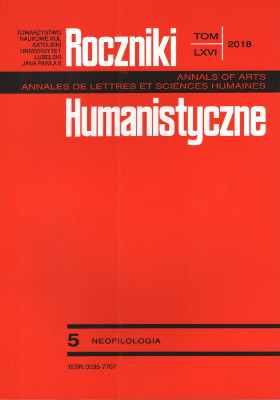L’arriviste : Emblème du déplacement dans le roman réaliste français des années 1830–1895. Esquisse
The Arriviste: An Emblem of Displacement in French Realist Novel from 1830 to 1895. Sketch
Author(s): Anna Hanotte-ZawiślakSubject(s): Language and Literature Studies, Studies of Literature, French Literature
Published by: Towarzystwo Naukowe KUL & Katolicki Uniwersytet Lubelski Jana Pawła II
Keywords: arriviste; social-climbing; novel; French nineteenth-century literature
Summary/Abstract: An arriviste is a typical example of a ‘child of the nineteenth century.’ The arriviste is a product of social and political developments such as The French revolution, Napoleonic rule and the industrial revolution. The changing climate of the nineteenth century provides new opportunities for young people, stimulating their imagination and awakening their ambitions to conquer the world. The ‘arriviste’ is a character in movement. The French term ‘arriviste’ first appears in the nineteenth century, and describes a hero who is ‘still arriving’, having not yet accomplished his career ambitions. An ‘arriviste’ is thus different from a parvenu, as he has not yet succeeded. The ‘arriviste’ usually begins his career when he leaves his family home as a young adult. He leaves behind his rural village or town, aiming to find success in the capital. He moves through social classes, shifting from his own modest milieu to socializing with the wealthy upper classes. The ‘arriviste’ is a literary character who unites himself with geographical and social displacement. Furthermore, he is often considered as a displaced hero. In search of a new position, he risks being considered as a usurper, unable to find the right place in the Society.
Journal: Roczniki Humanistyczne
- Issue Year: 66/2018
- Issue No: 5
- Page Range: 103-113
- Page Count: 11
- Language: French

